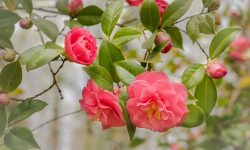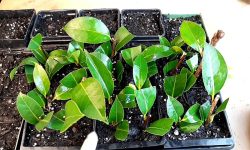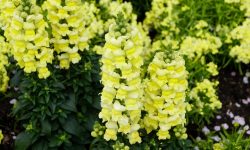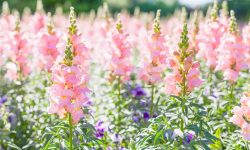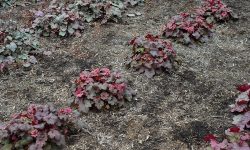Hyacinth bulbs are a gardener’s treasure, offering vibrant colors and fragrant blooms each spring. Proper storage after flowering ensures bulbs remain healthy and ready for next season. Without correct care, bulbs can rot, dry out, or fail to produce strong flowers. Understanding how to handle, clean, and store hyacinth bulbs is essential for maintaining their vitality. Even small mistakes during storage can reduce bloom size, fragrance, or overall plant health, impacting your garden’s beauty.
Many gardeners overlook post-bloom storage, focusing only on planting and flowering. Yet, careful storage can extend bulb life for several years, providing consistent, reliable blooms. Temperature, humidity, and ventilation all play crucial roles in preventing disease and encouraging vigorous growth. By following proven techniques, gardeners can preserve bulbs’ energy and ensure spring brings abundant, fragrant hyacinth flowers. Properly stored bulbs not only save money but also enhance the garden’s aesthetic and sensory appeal, making storage a critical step in seasonal flower planning.
Benefits of Properly Storing Hyacinth Bulbs
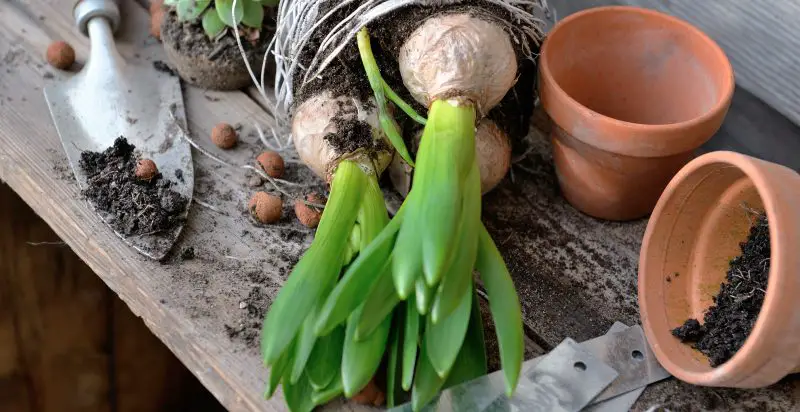
Properly storing hyacinth bulbs provides significant advantages for gardeners, both practical and aesthetic. Maintaining bulbs in optimal conditions ensures strong, healthy flowering, vibrant colors, and long-lasting blooms. By preventing rot, mold, or premature sprouting, gardeners preserve the bulb’s energy reserves. This translates directly into stronger stems, fuller flower clusters, and a more visually appealing garden display. Healthy bulbs also reduce the risk of uneven flowering or weak plants, giving gardeners consistent and satisfying results each spring.
In addition to improving flower quality, proper storage offers economic and planning benefits. Bulbs that remain viable from season to season reduce the need for yearly replacements, saving money and reducing waste. Gardeners can carefully plan garden layouts with predictable growth and flowering patterns, ensuring a coordinated and balanced appearance. Reusing bulbs allows enthusiasts to cultivate a wide variety of colors and arrangements without constantly purchasing new plants. This efficiency makes spring garden preparation easier and more enjoyable.
Proper storage also contributes to sustainability and ecological benefits. Healthy bulbs support thriving garden ecosystems, attracting pollinators and other beneficial insects. Preserving rare or exotic hyacinth varieties maintains genetic diversity, protecting valuable horticultural traits. Consistent storage practices ensure future flowering success, allowing gardeners to enjoy fragrant, colorful blooms year after year. By following careful storage techniques, gardeners not only enhance the visual and aromatic appeal of their gardens but also gain confidence and satisfaction from cultivating strong, reliable, and long-lasting hyacinth displays.
Ideal Temperature and Humidity for Storage
Maintaining the right temperature is critical for preserving hyacinth bulbs during storage. Bulbs require a cool, consistent environment to stay dormant and retain energy for the next growing season. The ideal range is between 50 and 60°F (10–15°C). Temperatures higher than this can trigger premature sprouting, which weakens the bulb and reduces flowering potential. Conversely, temperatures that are too low may damage the bulb tissue, causing frost injury or slowed metabolism. Consistent temperature control prevents fluctuations that stress bulbs and compromise their vitality.
Humidity plays an equally important role in bulb storage. Hyacinths need a moderately dry environment. Excess moisture can encourage mold, mildew, and fungal infections, leading to rot and decay. On the other hand, overly dry conditions can dehydrate bulbs, causing them to shrivel and lose stored energy. Gardeners should aim for relative humidity around 60%, which balances moisture retention without creating conditions favorable to disease. Using breathable containers and storage mediums such as dry peat moss, sand, or sawdust helps maintain this optimal humidity level.
Proper monitoring is essential to ensure both temperature and humidity remain within the desired range. Store bulbs in a cool, dark, well-ventilated area such as a cellar, basement, or dedicated storage room. Avoid areas that experience sudden heat changes, direct sunlight, or high moisture. Regularly check the storage environment and adjust ventilation, insulation, or the placement of bulbs as needed. By maintaining ideal temperature and humidity, gardeners can preserve bulb energy, prevent rot, and ensure strong, healthy hyacinth blooms in the following spring.
Selecting and Preparing Bulbs Before Storage
Choosing healthy hyacinth bulbs is the first critical step for successful storage and future blooms. Only firm, plump bulbs should be kept for the next season. Soft, damaged, or diseased bulbs are prone to rot and can infect healthy ones if stored together. Carefully inspect each bulb, looking for mold, discoloration, or insect damage. Any bulbs showing abnormalities should be discarded immediately. Selecting only the healthiest bulbs ensures a higher survival rate and maximizes flowering potential in spring. Proper selection also minimizes the risk of disease spreading throughout the storage batch.
Once bulbs are selected, proper cleaning and preparation are essential. Gently brush off excess soil without washing, as water can encourage fungal growth. Trim long roots and remove any dead or damaged outer scales, taking care not to cut into the core. Preparing bulbs carefully reduces the chance of rot during storage and helps preserve energy reserves necessary for strong shoots and blooms. Additionally, separating bulbs by size or quality can further improve storage outcomes, ensuring uniform growth and flower quality when planted next season.
After cleaning and trimming, allow bulbs to air-dry in a cool, shaded, well-ventilated area for several days. Drying hardens the outer layer and reduces surface moisture, preventing fungal infection during storage. Once dried, place bulbs in breathable containers such as paper bags, mesh sacks, or wooden boxes filled with dry peat moss, sawdust, or sand. This combination of careful selection, cleaning, trimming, and drying ensures bulbs remain healthy and ready to produce vibrant, fragrant hyacinths when planted. Proper preparation sets the foundation for long-term storage success and high-quality spring blooms.
Proper Containers and Mediums for Storage
Choosing the right containers is crucial for successful hyacinth bulb storage. Breathable options such as paper bags, mesh sacks, wooden boxes, or ventilated baskets work best. These containers allow adequate air circulation, preventing excess moisture that could lead to fungal growth. Avoid airtight plastic bags or sealed containers, as trapped humidity can cause rot and damage bulbs. Proper containers also make it easier to inspect and rotate bulbs during storage, ensuring even ventilation and reducing the likelihood of spoilage. Selecting the right container protects bulbs from mechanical damage and supports long-term viability.
Equally important is selecting an appropriate storage medium. Dry peat moss, sand, or sawdust provides cushioning and maintains stable humidity around the bulbs. The medium should be completely dry and free from mold, pests, or debris before use. Bulbs can be partially buried or nestled in the medium to minimize contact with other bulbs, reducing the risk of spreading disease. A suitable medium prevents bulbs from rubbing against one another, which could damage delicate outer layers. It also provides thermal insulation, helping bulbs maintain a consistent temperature.
Additionally, consider layering bulbs and medium within containers for optimal storage. Start with a base layer of medium, place bulbs on top, and cover them lightly with more medium. Ensure space for air circulation around each bulb. Store containers in a cool, dark, well-ventilated location, and check regularly for moisture, mold, or signs of decay. Proper containers combined with a well-chosen storage medium preserve bulb health, maintain energy reserves, and ensure strong, vibrant hyacinth blooms in the following spring. This careful approach maximizes storage success and bloom quality.
Monitoring and Maintaining Bulbs During Storage
Regular monitoring is essential to keep hyacinth bulbs healthy during storage. Even in ideal conditions, bulbs can develop mold, rot, or dryness if left unchecked. Inspect bulbs at least once every two to three weeks. Check for soft spots, discoloration, or unusual odors, which may indicate fungal infection or decay. Remove any affected bulbs immediately to prevent contamination of healthy ones. Maintaining vigilance ensures that only strong, viable bulbs remain, maximizing bloom success in the upcoming season.
Temperature and humidity should also be monitored constantly. Small fluctuations in temperature can trigger early sprouting or stress bulbs, reducing flowering potential. Relative humidity must remain balanced; too high encourages mold, while too low causes dehydration. Use a hygrometer and thermometer to track conditions, adjusting ventilation or insulation as needed. Containers should be rotated periodically to ensure even airflow, and any condensation on containers or mediums should be addressed promptly. These small steps help maintain bulb vitality and prevent losses.
In addition to environmental monitoring, consider gentle handling during inspections. Avoid dropping or jostling bulbs, as bruises can invite disease. Keep the storage area clean and free from pests such as rodents or insects. Lightly shaking the medium can prevent compaction and maintain proper airflow around bulbs. By consistently monitoring and maintaining bulbs throughout storage, gardeners preserve energy reserves, prevent disease, and ensure hyacinths emerge strong, healthy, and ready to produce vibrant, fragrant blooms in the next growing season.
Storage Duration and Seasonal Timing
Optimal Storage Duration
Hyacinth bulbs store best for a limited period, usually between 8 to 16 weeks, depending on conditions and variety. Storing bulbs too long can deplete their energy, reducing flowering potential. Short-term storage keeps bulbs dormant while preserving stored nutrients essential for vigorous growth. Gardeners should plan storage according to planting schedules and expected bloom times, avoiding extended storage that might weaken the bulbs. Proper duration ensures bulbs maintain vitality and can sprout robustly when planted.
During storage, check bulbs periodically to ensure they remain firm and free from mold or rot. Bulbs showing signs of shriveling or softness may need shorter storage or immediate planting. Maintaining optimal temperature and humidity supports the recommended storage duration. Tracking the start and end of the storage period helps align planting with seasonal conditions. By adhering to proper storage timelines, gardeners maximize the chance of vibrant blooms and reduce losses due to weakened or spoiled bulbs. Planning ahead for storage duration contributes to successful spring flowering.
Seasonal Timing for Storage
Timing storage according to the seasons is crucial for hyacinth bulbs. Typically, bulbs are lifted after summer dormancy and stored in late summer to early fall. This timing ensures that bulbs remain dormant through the hottest months, preventing premature sprouting. Starting storage too early may expose bulbs to unnecessary stress, while delaying storage risks sprouting before the proper planting window. Aligning storage with seasonal changes helps bulbs conserve energy and develop strong roots when planted.
Seasonal timing also influences planting schedules. Bulbs stored correctly can be planted in fall or winter, depending on local climate. Cooler fall temperatures favor root establishment without triggering early shoots. Monitoring seasonal patterns ensures bulbs avoid extreme temperatures and unfavorable conditions. By carefully coordinating storage with seasonal cycles, gardeners provide hyacinth bulbs with optimal dormancy, supporting healthy growth and maximizing flower quality in the following spring. Timing storage correctly safeguards the bulb’s vitality and future bloom potential.
Optimal Storage Conditions for Hyacinth Bulbs
Creating the right storage environment is crucial for preserving hyacinth bulbs’ health and vitality. Temperature plays a significant role, as bulbs require a cool environment to prevent premature sprouting or decay. Ideally, bulbs should be stored at a temperature between 50 and 60°F (10–15°C). Avoid areas that experience temperature fluctuations, such as garages that get too hot in the day or too cold at night. Consistent, moderate temperatures help maintain bulb dormancy and readiness for the next planting season.
Humidity is another essential factor. Bulbs should be kept in a moderately dry environment, as excessive moisture can cause mold or rot, while overly dry conditions may desiccate the bulb. Using breathable containers and materials, such as paper bags, mesh bags, or boxes filled with dry peat moss or sand, allows airflow while maintaining gentle moisture. Proper ventilation prevents condensation, limits fungal growth, and ensures bulbs remain firm and healthy. Periodic inspection during storage can help detect early signs of decay, allowing gardeners to remove affected bulbs before they contaminate the rest.
Light exposure should be minimized, as hyacinth bulbs are naturally dormant during storage and do not require sunlight. A dark, well-ventilated space such as a cellar, basement, or dedicated storage closet works best. Keeping bulbs away from direct sunlight or bright artificial light preserves their energy reserves. By combining the right temperature, humidity, and ventilation, gardeners create an environment that supports healthy bulbs, guaranteeing vibrant, fragrant blooms for the following spring. Proper storage conditions are essential for maximizing flower quality and prolonging bulb longevity.
Common Storage Mistakes to Avoid
Overwatering and High Humidity
One of the most common mistakes in storing hyacinth bulbs is overwatering or maintaining excessive humidity. Bulbs exposed to high moisture are prone to mold, mildew, and rot. Even a small amount of trapped water can quickly damage bulbs, rendering them unusable. Gardeners often make this error when using airtight containers or dense storage mediums that retain moisture. Maintaining a moderately dry environment is essential to preserve bulb vitality and prevent disease spread.
To avoid overwatering, use breathable containers and dry mediums such as peat moss, sand, or sawdust. Ensure proper ventilation and avoid stacking bulbs too tightly, which can trap moisture. Monitor humidity regularly with a hygrometer and adjust conditions as needed. Proper airflow around each bulb prevents condensation buildup, minimizing fungal infection. By carefully controlling moisture and humidity, gardeners ensure bulbs remain healthy and maintain energy reserves for strong blooms in the following season. Consistent monitoring is key to avoiding this common storage problem.
Improper Temperature and Handling
Another frequent mistake involves improper temperature or rough handling of bulbs. Storing bulbs in areas that are too warm can trigger premature sprouting, depleting energy reserves before planting. Conversely, exposing bulbs to freezing temperatures can damage tissue and reduce flowering potential. Sudden temperature fluctuations stress bulbs, weakening their overall health.
Handling bulbs roughly during storage or inspection can also cause bruising, cuts, or damage to the outer scales. Such injuries create entry points for fungi and bacteria, increasing the risk of rot. Always handle bulbs gently, inspect regularly, and avoid stacking containers in unstable locations. Using stable, well-ventilated storage spaces at consistent temperatures helps preserve bulb integrity. Avoiding these mistakes ensures hyacinth bulbs remain dormant, healthy, and ready to produce vibrant flowers in the next growing season.
Preparing Bulbs for Planting After Storage
After months of careful storage, hyacinth bulbs require thorough preparation before planting to ensure strong, vibrant blooms. Begin by inspecting each bulb for firmness, mold, or signs of rot. Only healthy, solid bulbs should be selected. Remove any damaged outer scales and gently trim old roots if necessary. This step reduces the risk of disease and encourages vigorous root growth once planted. Proper preparation also ensures bulbs can absorb water and nutrients effectively, supporting robust stems and flowers. Handling bulbs carefully prevents bruising, which can compromise flowering potential.
Next, consider soaking bulbs briefly in lukewarm water for a few hours to rehydrate any that have dried slightly during storage. Avoid prolonged soaking to prevent fungal infections. While bulbs soak, prepare the planting site with well-draining soil enriched with compost or organic matter. Loose, fertile soil allows roots to establish quickly and supports healthy growth. Planning the site ahead ensures proper drainage, reduces competition from other plants, and helps prevent disease. Correct soil preparation complements bulb care and lays the foundation for a successful growing season.
Finally, plan the planting layout carefully. Plant bulbs at a depth of two to three times their height, keeping the pointed end facing upward. Maintain proper spacing between bulbs to reduce nutrient and water competition. Apply a light mulch after planting to retain moisture and regulate soil temperature, protecting bulbs from frost or temperature swings. By combining careful bulb selection, hydration, and proper site preparation, gardeners maximize the potential for vibrant, fragrant hyacinth blooms that will thrive in the upcoming spring.
Extending Blooming Life Through Proper Storage
Proper storage of hyacinth bulbs directly affects the longevity and quality of their blooms. Bulbs kept in stable temperatures and balanced humidity retain more energy, which supports extended flowering periods. Avoid storing bulbs in areas with extreme heat, cold, or frequent temperature fluctuations, as these conditions can deplete stored nutrients or trigger premature sprouting. A well-maintained environment ensures that bulbs enter the planting phase healthy and vigorous, maximizing their ability to produce vibrant, long-lasting flowers.
Choosing the right storage medium and container further enhances bloom longevity. Dry peat moss, sand, or sawdust provides insulation while preventing excess moisture accumulation. Containers should be breathable, allowing air circulation to avoid mold and rot. Rotating bulbs periodically and inspecting them for signs of soft spots or decay helps maintain their health. By preserving bulbs in optimal conditions, gardeners give them the best chance to produce strong stems, rich color, and prolonged blooming once planted.
In addition, consistent monitoring during storage is crucial. Even minor issues, such as slight moisture buildup or unnoticed soft spots, can affect flowering potential. Checking bulbs every two to three weeks ensures problems are addressed promptly. Removing any damaged bulbs prevents contamination and maintains overall storage quality. Following these practices not only preserves bulb vitality but also contributes to a more rewarding spring display, with hyacinths blooming longer, remaining fragrant, and offering an extended period of visual and aromatic enjoyment in the garden.
Tips for Storing Rare or Exotic Hyacinth Varieties
Rare or exotic hyacinth bulbs demand extra care during storage to preserve their distinctive characteristics. These bulbs are often more sensitive to temperature, humidity, and light than common varieties. Storing them in a separate, climate-controlled environment helps prevent premature sprouting and reduces the risk of disease. Consistent monitoring ensures bulbs remain dormant, healthy, and full of energy for robust growth and vibrant flowering when planted in spring. Protecting these bulbs during storage is crucial to maintain their unique color, shape, and fragrance.
Proper handling also plays a key role in preserving exotic bulbs. Each bulb should be carefully inspected for softness, discoloration, or mold before storage. Use breathable containers with dry, well-draining mediums such as peat moss, sand, or sawdust. Avoid stacking bulbs too tightly to allow air circulation and minimize rot. Gentle handling prevents mechanical damage, ensuring bulbs retain their nutrient reserves and flowering potential. By providing the right medium and spacing, gardeners reduce stress on the bulbs and protect their delicate structures.
Seasonal timing and regular monitoring further enhance storage success. Store bulbs during their natural dormancy, usually late summer to early fall, while avoiding extreme temperatures or direct sunlight. Rotate bulbs periodically and inspect for early signs of disease or dehydration. Maintaining stable, optimal conditions helps rare hyacinths retain energy and ensures uniform flowering. Following these careful storage practices allows gardeners to enjoy exceptional blooms with full fragrance, vivid color, and strong stems, showcasing the unique beauty of rare and exotic hyacinth varieties each spring.
FAQ About How to Store Hyacinths
How long can hyacinth bulbs be stored safely?
Hyacinth bulbs can typically be stored for 8 to 16 weeks under proper conditions. Exceeding this period may deplete energy reserves, reducing bloom potential. Store bulbs in a cool, dry, and well-ventilated space. Regular monitoring ensures bulbs remain firm, free of mold, and ready for planting when the season arrives.
What is the ideal temperature for storing hyacinth bulbs?
The ideal storage temperature ranges between 50 and 60°F (10–15°C). Temperatures above this range can cause premature sprouting, while temperatures below it may damage the bulb tissue. Maintaining consistent temperature prevents stress, preserves energy reserves, and ensures healthy growth and vibrant blooms in the following spring.
How should humidity be managed during storage?
Relative humidity should remain around 60% to prevent dehydration or fungal growth. Excess moisture encourages mold, while overly dry conditions can shrivel bulbs. Use breathable containers and dry mediums such as peat moss, sand, or sawdust. Proper airflow and regular checks help maintain balanced humidity and protect bulb health.
Can damaged bulbs be stored safely?
No, soft, bruised, or diseased bulbs should not be stored. They are prone to rot and can infect healthy bulbs. Inspect each bulb carefully before storage, discarding any with discoloration, mold, or softness. Storing only healthy bulbs ensures a higher survival rate and better flower quality in the following season.
How often should bulbs be checked during storage?
Bulbs should be inspected every two to three weeks. Look for signs of mold, softness, or unusual odors. Remove any affected bulbs immediately to prevent spread. Monitoring containers for moisture and ventilation ensures bulbs remain healthy, preserving energy for strong, vibrant hyacinth blooms when planted next season.
Conclusion
Proper storage of hyacinth bulbs is essential for healthy, vibrant blooms in the following season. By selecting strong bulbs, preparing them carefully, using appropriate containers and mediums, and monitoring temperature, humidity, and condition, gardeners can prevent rot and premature sprouting. Avoiding common mistakes ensures bulbs retain energy and vitality. Consistent care during storage sets the stage for successful planting, strong root development, and abundant flowering. Following these detailed steps allows gardeners to enjoy fragrant, colorful hyacinth blooms each spring, making the effort invested in storage truly rewarding.

